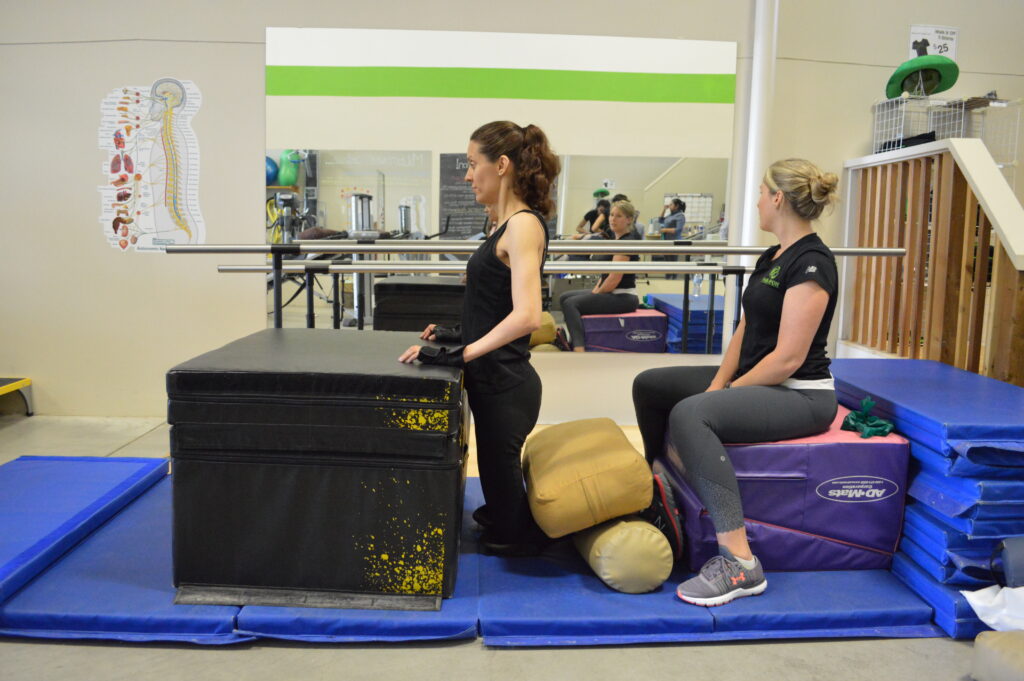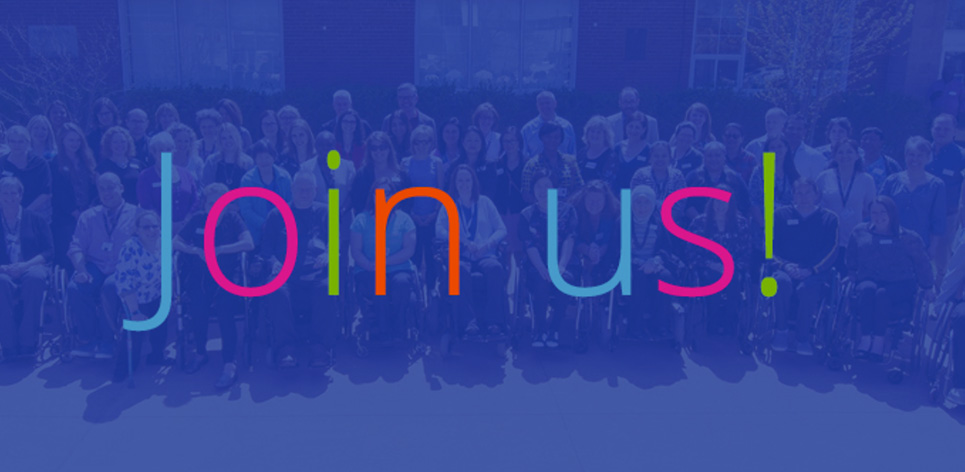Anita Kaiser: The Benefits of Activity-Based Therapy
Anita Kaiser is a fourth-year Ph.D. student at the University of Toronto. She sustained a spinal cord injury (SCI) in 1996 due to a motor vehicle collision which broke her neck. With over a year spent in the hospital relearning fundamental aspects of daily living such as bathing, dressing and feeding, it was baby steps toward progress and it took her a year to become stable following spinal shock. “It takes about a year to get a sense of where the person is neurologically,” says Anita, “And by the one-year mark, I regained whatever function I would have. I stretched a lot to strengthen the muscles above my injury level and developed techniques to be as independent as possible.” From the chest down, Anita had no feeling or movement and only limited function of her hands and fingers.

With the use of adaptive equipment, including utensils and transfer boards, she was able to be more independent. But it wasn’t until years later that she encountered someone in the community who told her about a facility called Walk it Off Spinal Cord Recovery and Wellness Centre. The community-based exercise clinic provides therapy for SCI and other neurological conditions that is different from the treatment she received post-injury. “What’s done differently is that regardless of level and severity of injury, they try to work with their clients to activate paralyzed muscles below their level of injury,” shares Anita.
Activity-based therapy (ABT) involves a range of therapeutic activities that target the muscles below the level of injury based on activity. Dosage varies from one to three hours a day and can involve sensory stimulation and task-specific movement practice. “I had been neurologically stable for a while, but the program sounded interesting even though the likelihood of gaining any function back was slim to none. So I gave it a shot,” says Anita. “I was working at the time, so I did it once a week for three hours and I was blown away by how much I was improving week to week in spite of the fact that I was only going once a week and had what was considered a severe injury. I thought, what if I was going more often? What about people with less severe injuries? I had so many questions.”

Upon mentioning ABT, people seemed skeptical and Anita started to brainstorm how it could be incorporated into rehab programs. In order to do that, she would need to prove that it works, along with determining the optimal dosage and intensity required.
In 2019, the Canadian ABT Community of Practice was formed, which brought together scientists, clinicians, administrators, funders and people with SCI to set priorities for the next five years on advancing the quality and access to ABT in Canada. Anita went back to school to address one of those priorities; tracking ABT across the continuum of care. Funded by CIHR and Praxis and supervised by Dr. Kristin Musselman, Anita scanned 140 articles. She identified 16 different types of exercises and 84 parameters, such as frequency and duration of the exercise and session. Whether the measures are objective or subjective, including speed, duration, heart rate, pain, and fatigue. “It’s important to capture both to get a comprehensive picture of what’s going on throughout the continuum of care,” says Anita. The group also interviewed people from six different stakeholder groups, including researchers, people with SCI, hospital admins, hospital therapists, community exercise trainers, advocates, and policy makers, to understand their perspective on what details were important to track and the barriers to implementing ABT in Canada.
The hope for Anita is that people with SCI and clinicians will be able to track the details of their ABT sessions at home, rehabilitation or a community facility.“It will lead to being able to determine best practice guidelines, and if it translates to reduced secondary complications, there is a case for saving health care costs down the line.”
Anita shares that although there is a cost to participate in ABT at facilities like Walk It Off, it is a non-profit organization and they try to keep the costs as low as possible, acknowledging that financial troubles exist in the disability community. She hopes that ABT will be offered as a regular part of rehab in the future. “One of the challenges is that the length of stays is short, so rehab focuses on the most immediate issues to get patients ready for discharge and as independent as possible,” she shares.
She also stresses that insurance companies need to recognize the value of ABT so that it is made affordable and with more locations so that people can access ABT clinics easily.
While the data is in the works to prove the value of ABT, Anita says there is a lot we can do as a community to raise awareness about the potential benefits of this type of therapy.
“For me, even 15 years post-injury, the strength in my triceps improved and they’re close to full function now. I built strength in my trunk area below my level of injury and I even noticed sensation changes. I could feel the deep heat of a hot plate on my lap or a bone chill with cold items,” shares Anita. And she has seen other individuals who have participated in ABT more often make even more significant gains. “The neat thing is it’s not just a therapist moving your body. It’s very active and participatory and takes mental effort.”
To participate in the research for Activity-based Therapy you can learn more here.


